FRANCE
Lille

Lille
Lille
Lille is the capital of the Nord-Pas-de-Calais region and the prefecture of the Nord department. It is the main city in the metropolitan area. It is the largest conglomeration in France after Paris, Lyon and Marseille. Lille is located on the river Deûle, near the French border with Belgium. According to the 2007 census, there were 226,014 inhabitants in the city of Lille and 1,164,716 inhabitants in the metropolitan area. The city is a former industrial center.
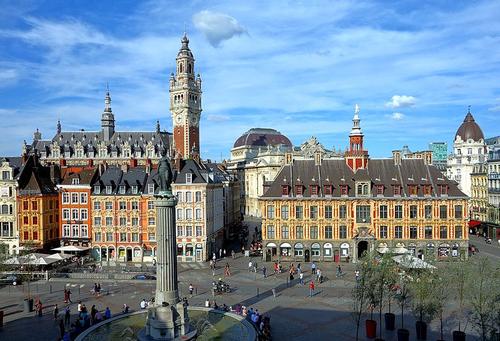 Lille Old CityPhoto: Velvet CC 3.0 Unported no changes made
Lille Old CityPhoto: Velvet CC 3.0 Unported no changes made
Location
Lille coordinates are: 50° 38'14'N 3° 03'48'E
Lille is located next to the border with Belgium, in a valley of the river Deûle, on 39.51 km² territory. The metropolitan area extends over 975 km². The lowest point is 18 meters and the highest point is 46 meters. The river flows through the city, which is an important river port. Lille is an agglomeration with the cities of Roubaix and Tourcoing. By car, Lille is 80 km from Dunkirk, 110 km from Calais, 230 km from Paris, 90 km from Ostend, 125 km from Antwerp, 300 km from Amsterdam, 305 km from Luxembourg and 330 km from Cologne.
Lille is the third largest inland port in France after Paris and Strasbourg. The river Deûle is connected to the north by the river Scheldt (towards Belgium and the Netherlands), and via the Leie (towards Dunkirk and Calais).
Weather
Lille has a moderate maritime climate, the summers are not too hot. In winter, the temperature can drop below zero. The average temperature is 13.6 °C, the average winter temperature is 6.1 °C. The highest temperature measured is 36.1 °C, the lowest -3.1 °C. The average precipitation is 723 mm over the whole year. The sun shines an average of 1,600 hours a year.
History
According to legend, Lille was founded in the year 640. Archaeological research shows that the area was already inhabited from 2000 BC. The city was first mentioned in a document from the year 1066. The original inhabitants of this region were the Gauls, who were succeeded by Germanic tribes, the Saxons and the Frisians and later by the Franks. Lille has a long history and a rich tradition of armed resistance. It is a city that has suffered the greatest number of sieges in all of France.
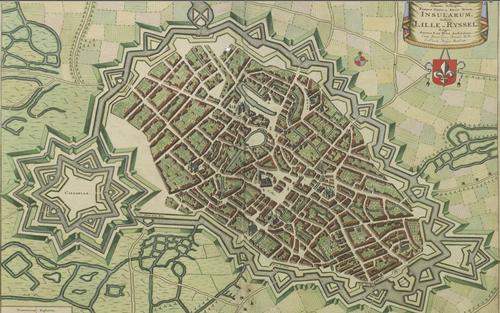 Lille map from 1641Photo: Public Domain
Lille map from 1641Photo: Public Domain
In the 16th century, the regional textile industry became increasingly important and there were Protestant revolts in Lille. In 1667, Louis XIV of France successfully besieged Lille and annexed Lille in 1668, under the Treaty of Aix-la-Chapelle. Lille remained Catholic in the 18th century. It played a small part in the French Revolution, there were riots and churches were destroyed. In 1790, the city held municipal elections for the first time. By 1800 the city had about 53,000 inhabitants and in 1804 Lille was declared the capital of the province of the Nord department. In 1846 a railway was built between Paris and Lille. In 1912 the population grew to 217,000, the Industrial Revolution gave a boost to the development of the city, especially the coal mines and the textile industry became important. In July 1921, Albert Calmette and Camille Guerin discovered the first anti-tuberculosis vaccine at the Pasteur Institute in Lille.
During the Second World War, Lille was besieged by German troops. Due to the French defenses, many Allied troops were able to escape to Dunkirk. Lille became part of the zone under the control of the German command in Brussels. From 1 to 5 September 1944, the departments of Nord and Pas-de-Calais were liberated by the British, American, Canadian and Polish troops.
In 1967 the Chambers of Commerce of Lille, Roubaix and Tourcoing were merged and in 1969 the metropolitan area of Lille was created. 87 communities were merged with Lille. From the early 1980s, the city began to focus more on the service sector. In 1993 a TGV line was opened connecting Lille to Paris in one hour. This, combined with the opening of the Channel Tunnel in 1994 and the arrival of the Eurostar train, makes Lille an important center between Paris, London and Brussels.
Sights
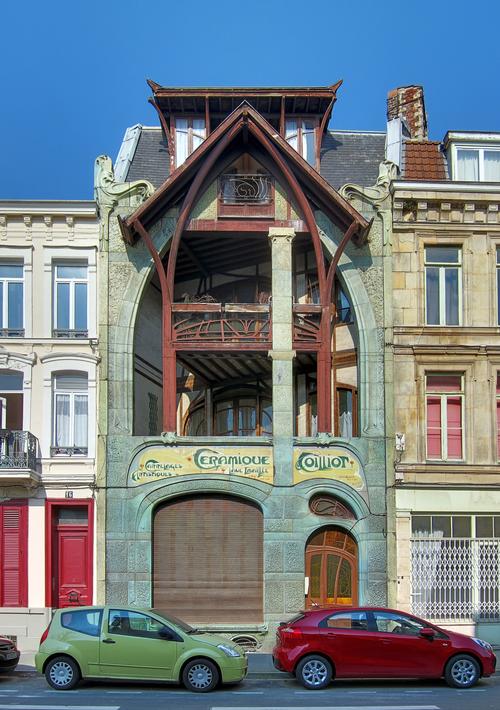 Lille House CoilliotPhoto: Velvet CC 3.0 Unported no changes made
Lille House CoilliotPhoto: Velvet CC 3.0 Unported no changes made
Lille was elected European Capital of Culture in 2004, along with the Italian city of Genoa. Lille has different architectural styles, with a lot of influence from Flemish architecture through the use of brown and red brick. Characteristic are the two to three storey terraced houses with narrow back gardens. This is unusual in France. Lille's street scene is a transition from the architecture of France to the neighboring countries of Belgium, the Netherlands and England, where brick houses were built in large numbers. Architectural heritage includes the Gothic style of the Middle Ages (Saint-Maurice and Sainte-Catherine churches); the Renaissance (Houses in Rue Basse), Flemish Mannerists in Vieille Bourse (Old Stock Exchange), Classical style (Saint-Étienne, Saint-Andre churches, the Citadelle), Gothic Revival (Cathedrale Notre-Dame-de-la-Treille), Art Nouveau (House Coilliot), regional Art-Deco - Hôtel de Ville (town hall) and the contemporary modern structures of Euralille. Construction of this important urban project started in 1991. The center opened in 1994 and the renewed district is now full of parks and modern buildings with offices, shops and apartments.
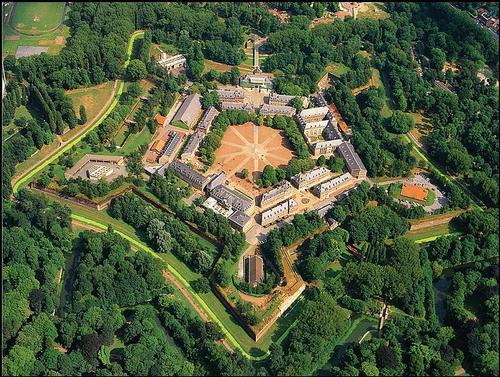 Citadel LillePhoto: Piocrr CC 3.0 Unported no changes made
Citadel LillePhoto: Piocrr CC 3.0 Unported no changes made
The famous sights in the city that tourists like to visit are: Notre Dame de la Treille Cathedral, the Citadel of Lille, the Palais des Beaux-Arts de Lille and the Botanical Garden of the Pharmaceutical Faculty.
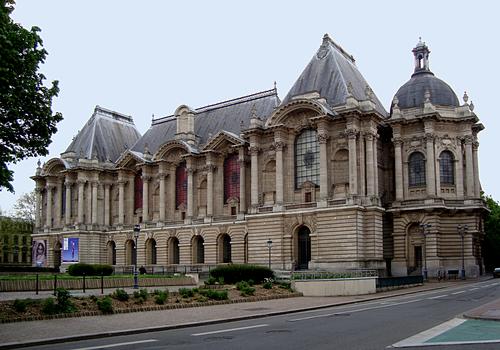 Lille Palais des Beaux-ArtsPhoto: Velvet CC 3.0 Unported no changes made
Lille Palais des Beaux-ArtsPhoto: Velvet CC 3.0 Unported no changes made
The Palais des Beaux-Arts de Lille (Palace of Fine Arts) is one of the largest museums in France and the largest French museum outside of Paris. It is one of the first museums to be built in France under Napoleon I in the early 19th century. The museum covers 22,000 square meters and features the second largest collection in France after the Louvre. The rich collections of paintings, sculptures, drawings and other artifacts include works by Raphael, Donatello, Van Dyck, Tissot, Jordaens, Rembrandt, Goya, El Greco, David, Corot, Courbet, Toulouse-Lautrec, Delacroix, Rubens, Rodin, Claudel and Jean-Baptiste Chardin. The museum contains a design department, a sculpture gallery, a ceramics collection and a number of models of the fortified cities of the north of France and Belgium and a rich collection of coins.
In addition to cultural tourism, the city has also developed business tourism. Lille has a Grand Palais and many conference rooms, which can accommodate large congresses.
Tips
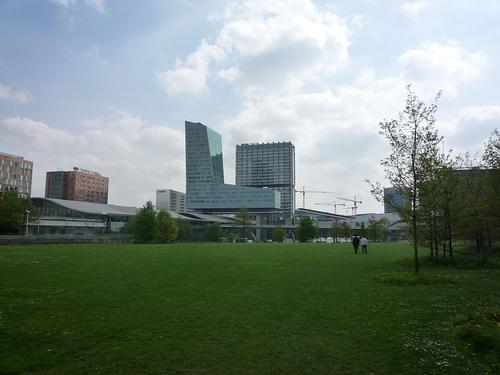 EuralillePhoto: JANNICK Jeremy in the public domain
EuralillePhoto: JANNICK Jeremy in the public domain
Also visit Euralille, this is a new district with futuristic towers, which was built in 1994. Euralille is the new economic heart of the city. Here you will find the ultramodern train station, the Grand Palais (conference rooms, fair, exhibition rooms and event rooms) and the Euralille shopping center. Famous architects have contributed to it, including Rem Koolhaas.
La Piscine in Roubaix is very easy to reach from Lille by metro or tram. This applied art museum is located in an art deco swimming pool. There is a lot of attention for design, but there is also a collection of sculptures and paintings that are worthwhile.
Useful links Lille
BBC Country ProfilesWorld Fact Book Explore all Countries
How to call
Last updated November 2025
Copyright: Team - The World of Info